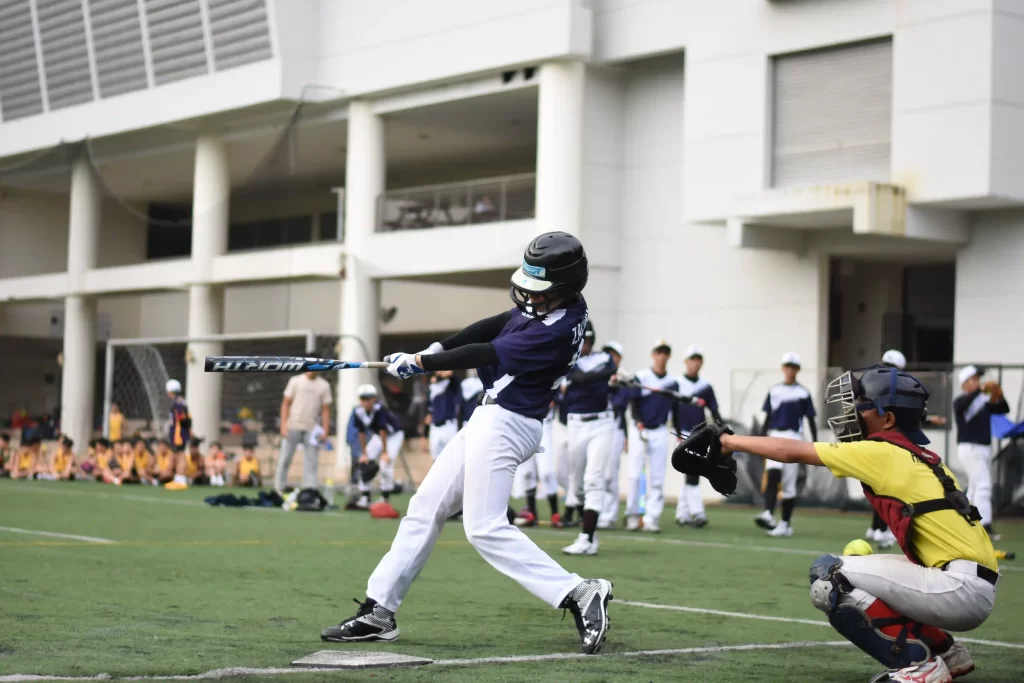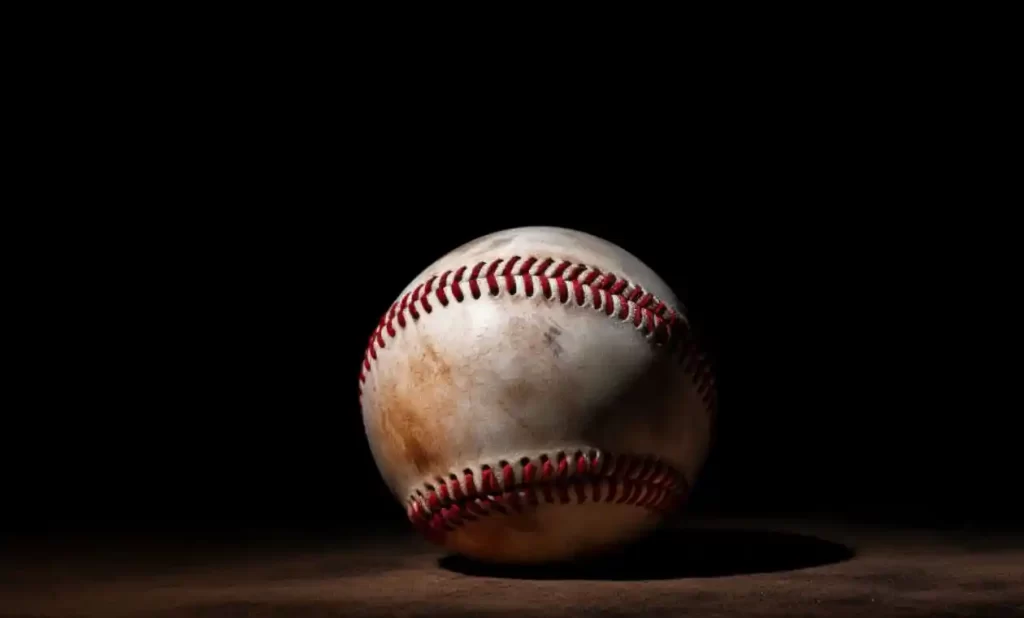
Hey there, fellow baseball enthusiasts! Ever wondered about that mysterious thing called the “strike zone” in baseball? Well, you’re not alone. It’s like the secret ingredient in your grandma’s famous chocolate chip cookies – everybody knows it’s crucial, but what exactly is it?
In the world of baseball, the strike zone is kind of a big deal. It’s like the border control for pitches, deciding what’s a “strike” (the good stuff for pitchers) and what’s a “ball” (the green light for batters). You see, understanding the strike zone is essential for players, fans, and even the umpires who call the shots.
In this blog, we’re going to unravel the mysteries of the strike zone. We’ll dive into what it is, where it’s located, and why it matters. So, grab your baseball cap and get ready to explore the fascinating world of the strike zone in baseball. Let’s hit it out of the park!
Also Read: Baseball Glove Buying Guide
What Is the Strike Zone?
Picture this: you’re at the plate, and a pitcher winds up for the pitch. You’re hoping for a nice, juicy pitch to whack out of the park. But wait, the umpire calls it a “ball.” What’s going on?
In baseball, the strike zone is like the boss of the game. It’s a magical space above home plate. If a pitch goes through this magical space, it’s a “strike.” But if it misses, it’s a “ball.” Simple, right?
An Old-Timey Tale
Now, let’s step into our time machine and go back in baseball history. The strike zone has been around for a while. Back in the day, it wasn’t always the same size. It’s like those jeans you wore in high school – they’ve seen some changes over the years.
In the early days, the strike zone was more like a suggestion. It was basically, “Eh, if it’s close enough, we’ll call it a strike.” But as the game evolved, they decided to make things more precise. Rules were set, and the strike zone became official. It’s like going from “anything goes” to “follow the recipe.”
So, we’ve got our strike zone, and it’s here to stay. But where exactly is it located? Let’s find out.
Where Is the Strike Zone Located?
The Strike Zone Blueprint
Now that we know what the strike zone is, let’s zoom in on its precise coordinates. It’s not like finding hidden treasure, but it’s still pretty cool.
Imagine a box hovering over home plate. That’s your strike zone. But here’s the kicker – it’s not one-size-fits-all. Nope, it adjusts for different batters. Why? Well, we’re all unique, right?
High and Low, Tall and Short
First, we’ve got the height. For most batters, the strike zone stretches from just below the knees to about halfway between the belt and the chest. It’s like that Goldilocks zone – not too high, not too low, just right.
But if you’re a batter who’s as tall as a giraffe or as short as a garden gnome, your strike zone shifts accordingly. So, if you’re on the shorter side, your strike zone won’t be sky-high. And if you’re towering over everyone, it won’t be down by your ankles either.
In a nutshell, the strike zone is like a flexible fashion statement – it adapts to your unique style. It’s that extra touch of personalization in the game of baseball. But why does the strike zone even matter? We’ll tackle that in the next section.
Significance of the Strike Zone
Strategy at Play
Now, let’s get to the nitty-gritty. Why should you care about the strike zone? Well, it’s like the secret ingredient in a sandwich – it makes all the difference.
For Pitchers
Pitchers, listen up. The strike zone is your canvas. Throwing strikes in this zone is like a pitcher’s masterpiece. It’s your way of saying, “Hey batter, try hitting this!”
But here’s the twist. The size of the strike zone affects your game plan. A smaller strike zone means you can target specific spots, making life tough for batters. A bigger strike zone? It’s a bit like a wider target. It’s like telling the batter, “Go ahead, take your best shot.”
For Batters
Batters, don’t feel left out. The strike zone’s your turf too. Knowing this zone inside out helps you make smarter choices.
When the pitch comes your way, you’ve got to decide: swing or not? If it’s inside the strike zone, it’s a tempting treat. But if it’s a ball, you better let it slide.
Umpire, You’re Up
And let’s not forget the umpire. The strike zone is their playground. They make the call – strike or ball. Their job isn’t easy. They’re like the referees in a basketball game, only with a different kind of hoop.
But here’s the kicker – umpires don’t all see the strike zone the same way. It’s like an abstract painting. One umpire’s strike might be another’s ball. That’s why it’s crucial for them to get it right.
In a nutshell, the strike zone is the heartbeat of the game. It shapes strategies, keeps pitchers on their toes, and gives batters a puzzle to solve. It’s the umpire’s arena, where every pitch is a decision. So, whether you’re on the mound or at the plate, the strike zone is where the action unfolds.
Strike Zone Rules and Interpretations
Rules of the Game
Alright, team. It’s time to dive into the rulebook. The strike zone has its own set of rules, just like a board game with its quirky instructions.
The Strike Zone Rule
So, what are the rules governing this mysterious zone? The strike zone isn’t a free-for-all; it’s got some boundaries. In general, it’s a space from your knees to about halfway between your chest and your belt. We’ve got to keep it in check; otherwise, chaos would reign.
But Wait, There’s More
Here’s where things get interesting. The size of the strike zone is a bit like that pizza place down the street – it might have its interpretation. Umpires see it differently, and that can lead to some fun debates.
Dealing with Misconceptions
Now, let’s tackle the quirkiest part – misconceptions. There are myths about the strike zone that rival Bigfoot sightings. Some folks think it’s way bigger than it actually is, while others believe it’s teeny-tiny. It’s like arguing whether a tomato is a fruit or a vegetable.
And let’s not forget the umpires – sometimes they call ’em high, sometimes they call ’em low. It’s all part of the game’s charm. But these controversies make for great water cooler conversations, right?
In the end, the strike zone is a rulebook with some room for interpretation. It’s like jazz music – there’s a structure, but there’s also room for improvisation. So, next time you see a batter giving the umpire a “look,” you’ll know what’s cooking.
Also Read: Baseball Helmet Guide
Practical Tips for Players
Pitching Perfection
Now, let’s talk strategy for our players. Whether you’re on the mound or in the batter’s box, you need a game plan.
Pitchers, Pay Attention
Pitchers, this one’s for you. Targeting the strike zone is your ticket to success. But how do you do it? It’s like aiming for a bullseye on a dartboard.
Find Your Spots
First, focus on finding your “sweet spots.” These are areas within the strike zone where you’re most accurate. Think of it as your comfy chair in the living room – you know it’s the best spot.
Vary Your Pitches
Next, mix up your pitches. It’s like a magician’s bag of tricks. Throw fastballs, curveballs, and change-ups. Keep batters guessing like they’re solving a mystery.
Keep It Consistent
Consistency is key. It’s like making pancakes – you want them all the same size. If you’re all over the place, batters will catch on. So, aim for that pancake-level consistency.
Batters, Your Turn
Batters, your job is to recognize strikes and balls. It’s like being a detective solving a puzzle.
Watch the Ball
Keep your eagle eyes on the ball. If it crosses through the strike zone, you’ve got a decision to make – swing for the fences or let it pass. It’s like deciding whether to catch a bus or wait for the next one.
Practice Patience
Sometimes, patience is your best friend. Just because it’s in the strike zone doesn’t mean it’s a home run waiting to happen. Be choosy. Remember, even the coolest superheroes have their flaws.
Game On!
So, players, remember these tips as you step onto the field. Pitchers, find your sweet spots and mix it up. Batters, keep your eyes sharp and your patience intact. With these strategies, you’ll be ready to conquer the strike zone like a pro.
Also Read: Aluminum vs. Wooden Bats
In Crux
Alright, folks, we’re coming in hot to home plate, and it’s time to wrap things up. Let’s jog around the bases and recap what we’ve learned.
The strike zone is the unsung hero of baseball. It’s like the secret sauce on your burger – you don’t always notice it, but it makes all the difference.
It shapes the game, plain and simple. Picture baseball without the strike zone. It’d be like a cheeseburger without cheese – just not the same.
It’s where strategies are born. Pitchers and batters engage in a game of wits, trying to outsmart each other within that magical zone. It’s like a chess match, only with more running.
And, let’s not forget the controversies. Umpires with their unique strike zone interpretations add a dash of drama to the game. It’s like watching a thrilling movie with unexpected plot twists.
So, as we take the final pitch, remember this: the strike zone is where the action happens. It’s not just an imaginary box; it’s the heartbeat of baseball.
As fans, players, and even umpires, we can’t imagine the game without it. It’s the canvas where pitchers paint their masterpieces and batters strategize their home runs.
And there you have it, the strike zone – the ultimate game-changer in baseball. Thanks for joining our journey through this magical zone. Now, go enjoy the game with a fresh perspective, and maybe even share some fun facts with your friends. Play ball!

Meet Daniel Anderson, the heart and soul behind Baseball Pro Picks. At 49, Daniel’s life has revolved around baseball, a passion that’s as strong today as it was when he first fell in love with the game. Living in the USA, Daniel has dedicated countless hours to watching, analyzing, and understanding every pitch, hit, and home run, making almost no game missed. His deep-rooted love for the sport is matched only by his commitment to sharing insightful, expert analysis with fellow baseball enthusiasts. With decades of experience and a keen eye for the game’s nuances, Daniel brings a unique perspective that enriches Baseball Pro Picks. Trust Daniel to guide you through the intricacies of baseball with the authority and trustworthiness of a true aficionado.












